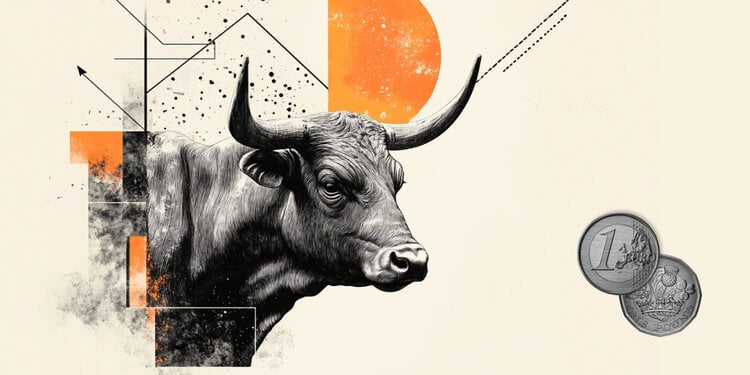Three-toed fossil footprints dating back more than 210 million years were pressed into soft mud by bipedal reptiles with bird-like feet, a new analysis of the footprints has revealed.
The footprints, found at several sites in southern Africa, were recently identified as the oldest bird-like footprints, and date back about 60 million years before the first known bird fossils.
“Given their age, they were probably made by dinosaurs,” said Dr Miengah Abrahams, professor of geological sciences at the University of Cape Town in South Africa. Abrahams is the lead author of the new study describing the footprints, published Tuesday Monday (28) in the scientific journal PLOS One.
Theropods, including Tyrannosaurus Rex, were a diverse group of bipedal carnivores with three-toed feet. But among these recently examined dinosaur footprints, there were some that were different from typical theropod footprints.
They had a shorter central digit span, a much wider opening and “significantly narrower fingers,” making them look more like bird tracks, Abrahams explained to CNN .
However, as the animals that made the tracks are unknown, their relationship to birds is unclear.
The prints may represent a missing clue about the evolution of birds, or they may belong to reptiles that are not close to the avian lineage but that independently evolved bird-like feet, the researchers reported.
Boneless fossils
The footprints were discovered in the mid-20th century and given the scientific name Trisauropodiscus by French paleontologist Paul Ellenberger.
The name is an ichnotaxon, that is, a genus based on trace fossils, or fossilized impressions that an animal left behind, rather than fossils of its body.
It is believed that there are seven ichnospecies linked to the footprints of Trisauropodiscus, and for decades paleontologists have argued about the group’s avian affinity. Some thought the footprints were bird-like, but others weren’t so sure.
Ellenberger may have left a dubious environment by attributing many differently shaped tracks to the ichnotaxon, “and not all of them are bird-like,” Abrahams said.
What’s more, the shape of a footprint can vary greatly based on the type of material the animal stepped on.
This can make it difficult to identify physical characteristics of extinct animals when fossilized footprints are the only clues they left behind, explained Dr. Julia Clarke, a professor of vertebrate paleontology at the University of Texas at Austin who was not involved in the study.
“Footprints are a really unique record, but there’s always going to be that zone of uncertainty, just in the nature of the data that we have,” Clarke told CNN.
At the time the Trisauropodiscus footprints were imprinted in the mud, evolutionary adaptations were growing in archosaurs, the ancient group of reptiles that includes dinosaurs, pterosaurs and crocodilians.
So it’s intriguing to find evidence of bird-like feet in an unknown member of this group, the expert added.
“The footprints do not directly correspond to any known animal fossil from this region and period. They could belong to other reptiles or ‘cousins’ of dinosaurs that developed bird-like feet,” Clarke highlighted.
“This is increasing our understanding of morphological diversification in this really important period for archosaurs,” he said.

Investigating the discovery
The researchers’ investigation began in 2016: the UCT team was “following in the footsteps of Paul Ellenberger, documenting his sites using modern ichnological standards”, said Abrahams.
During a trip to Maphutseng, a fossil site in Lesotho, the team found several bird-like tracks from the Triassic Period. “It took us a while to realize we were looking at Trisauropodiscus,” he said.
“Our initial impression was that these footprints were actually very bird-like, and we knew we needed to investigate them further,” he added.
This involved visiting archaeological sites, analyzing archive photos, sketches, casts and creating 3D digital models of the footprints.
Scientists reviewed 163 prints and divided them into two categories, or morphotypes, based on their shapes.
Footprints categorized as Morphotype I were marked as non-avian. They were a little longer than they were wide, with rounder, sturdier toes that were narrowly splayed.
“They also have a distinct ‘heel,’” formed by the pads of the third and fourth digits, Abrahams said.
In comparison, Morphotype II tracks were smaller. They were wider than they were long, with thinner fingers.
In its shape and the wide extension of its digits, this second group of footprints closely resembled those of a bird from the Cretaceous Period (145 million to 66 million years ago): the wading bird Gruipeda, another ichnogene known only by its footprints.
And overall, the Morphotype II tracks closely resembled the tracks of modern birds, the scientists reported.
The earliest fossil evidence of paravians – the group of dinosaurs that includes the first birds and their closest relatives – appears from the mid-Jurassic Period (201.3 million to 145 million years ago).
The footprints of Morphotype II Trisauropodiscus, which date back at least 210 million years, suggest that bird-like feet are even older.
“Trisauropodiscus shows that the morphology of bird-like feet is much older, a feature shared between modern birds and other Late Mesozoic archosaurs,” Abrahams said.
“This research contributes to our ongoing collective understanding of the evolution of dinosaurs and birds,” he concluded.
*Mindy Weisberger is a science writer and media producer whose work has appeared in Live Science, Scientific American, and How It Works magazines
Source: CNN Brasil
Charles Grill is a tech-savvy writer with over 3 years of experience in the field. He writes on a variety of technology-related topics and has a strong focus on the latest advancements in the industry. He is connected with several online news websites and is currently contributing to a technology-focused platform.







